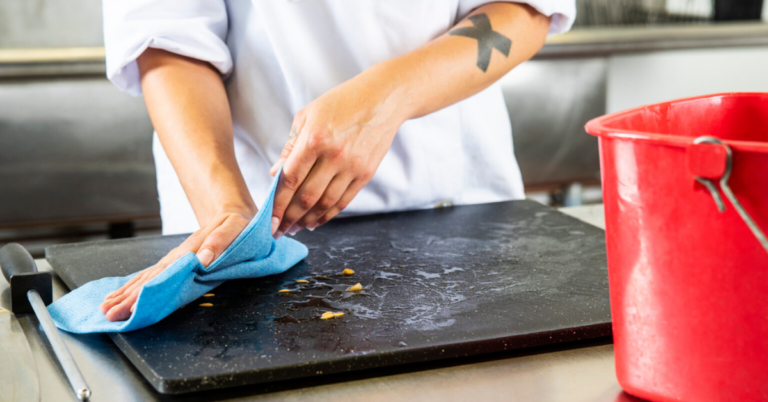What to Expect in a Basic Food Hygiene Course: Key Topics and Learning Outcomes
Food hygiene is an essential aspect of food safety, impacting the well-being of consumers and the success of any food-related business. Whether you’re working in a restaurant, food production, or just looking to improve your knowledge, a Basic Food Hygiene Course provides the foundational skills necessary to handle food safely. In this article, we’ll walk you through the key topics and learning outcomes of a Basic Food Hygiene Course, so you know exactly what to expect.
What Is a Basic Food Hygiene Course?
A Basic Food Hygiene Course is designed to provide essential knowledge about maintaining food safety standards in various environments. The course covers practices that prevent foodborne illnesses, contamination, and the spread of bacteria. Whether you’re preparing food at home or working in a professional setting, understanding food hygiene practices can greatly reduce the risks of foodborne illnesses.
Key Topics Covered in a Basic Food Hygiene Course
- The Importance of Food Hygiene
- The course begins by emphasizing the importance of food hygiene, its impact on public health, and the legal responsibilities of food handlers.
- Participants learn how poor food hygiene practices can lead to foodborne illnesses, contamination, and costly health issues.
- Personal Hygiene for Food Handlers
- Proper personal hygiene is crucial in any food-handling setting. The course will cover guidelines on handwashing, the use of protective clothing, and maintaining cleanliness in personal habits.
- Students learn the significance of preventing cross-contamination through hygiene practices like wearing gloves, hairnets, and avoiding illness when handling food.
- Food Safety Hazards
- The course explains the different types of hazards that can contaminate food, including biological (bacteria, viruses), chemical (cleaning products, pesticides), and physical (glass, metal fragments).
- Participants will gain an understanding of how these hazards affect food and the necessary precautions to minimize them.
- Temperature Control
- Temperature plays a critical role in preventing bacterial growth in food. The course covers safe cooking, chilling, and storage temperatures.
- Participants will learn about the dangers of leaving food in the “danger zone” (between 5°C and 63°C), where bacteria thrive, and how to maintain safe temperature practices.
- Cleaning and Sanitizing
- A significant portion of the course will focus on how to effectively clean and sanitize food preparation areas, tools, and equipment.
- Students will understand the importance of proper cleaning schedules, using the right cleaning agents, and maintaining hygienic food preparation environments.
- Cross-Contamination Prevention
- Cross-contamination is a leading cause of foodborne illness. This section teaches students how to avoid cross-contamination by separating raw and cooked foods, cleaning surfaces, and handling food safely.
- Participants will learn how to properly store food to avoid mixing raw ingredients with ready-to-eat items.
- Food Storage and Shelf Life
- Safe food storage practices are essential to ensure that food stays fresh and free from contamination. The course covers how to store foods at appropriate temperatures and manage stock rotation (FIFO – First In, First Out).
- Participants will learn about expiration dates, shelf life, and methods to reduce food wastage by following correct storage protocols.
Learning Outcomes of a Basic Food Hygiene Course
By the end of the course, participants will have a solid understanding of food hygiene principles and be equipped to apply these practices in their daily routines. Here are some of the key learning outcomes:
- Understanding Food Safety Laws and Regulations: Students will be familiar with local food safety laws and regulations that govern food handling and hygiene practices.
- Ability to Identify and Prevent Food Safety Hazards: Participants will learn how to identify potential hazards and implement strategies to prevent contamination at all stages of food preparation.
- Proficiency in Safe Food Handling Practices: Students will be able to follow procedures for safe food handling, from cleaning and storage to preparation and cooking.
- Knowledge of Effective Cleaning and Sanitation Procedures: After completing the course, students will be confident in cleaning and sanitizing food preparation areas and equipment properly.
- Increased Awareness of Personal Hygiene in Food Handling: Participants will understand the importance of personal hygiene in maintaining a safe food environment and will be able to adhere to best hygiene practices.
Who Should Take a Basic Food Hygiene Course?
A Basic Food Hygiene Course is suitable for anyone involved in food handling or preparation, including:
- Restaurant and cafe workers
- Catering staff
- Food producers and manufacturers
- Home cooks and parents
- Anyone working in a food-related business
Conclusion
A Basic Food Hygiene Course is an essential learning experience for anyone involved in food preparation or handling. It covers a wide range of topics that ensure food safety, minimize contamination risks, and comply with legal regulations. Whether you’re starting a career in food service, managing a restaurant, or simply looking to improve your personal food handling practices, this course will give you the knowledge and skills you need to keep food safe and ensure a healthy environment for consumers.
By understanding the importance of food hygiene, practicing safe food handling, and committing to personal and environmental cleanliness, you contribute to public health and make food enjoyable and safe for all.







